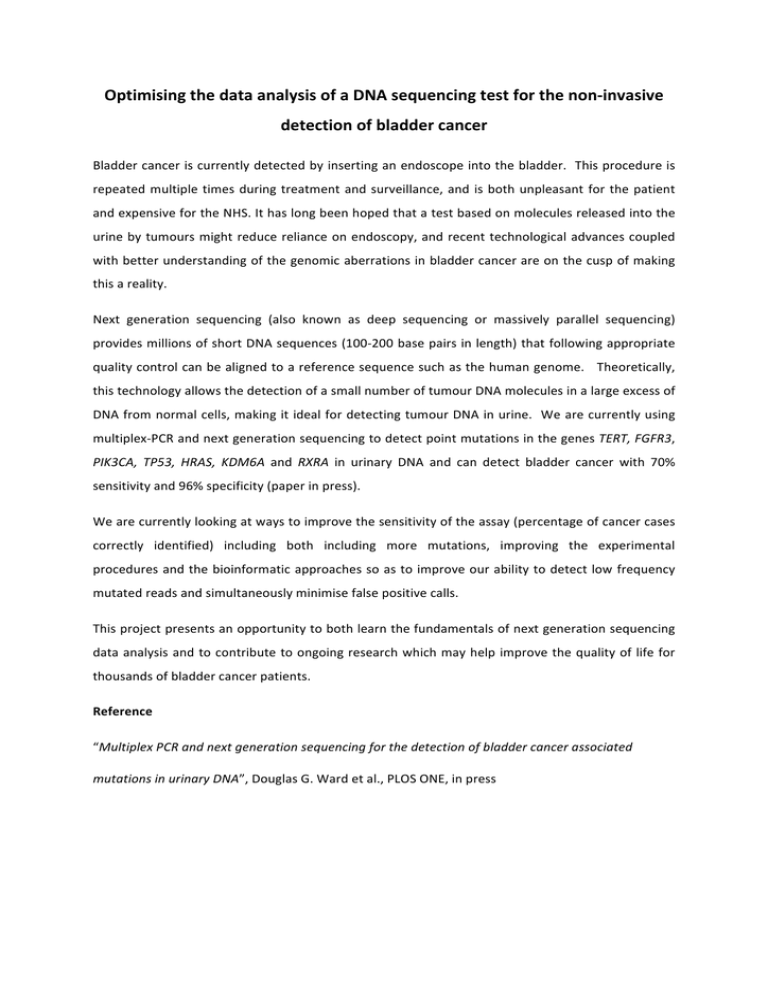Document 12919457
advertisement

Optimising the data analysis of a DNA sequencing test for the non-­‐invasive detection of bladder cancer Bladder cancer is currently detected by inserting an endoscope into the bladder. This procedure is repeated multiple times during treatment and surveillance, and is both unpleasant for the patient and expensive for the NHS. It has long been hoped that a test based on molecules released into the urine by tumours might reduce reliance on endoscopy, and recent technological advances coupled with better understanding of the genomic aberrations in bladder cancer are on the cusp of making this a reality. Next generation sequencing (also known as deep sequencing or massively parallel sequencing) provides millions of short DNA sequences (100-­‐200 base pairs in length) that following appropriate quality control can be aligned to a reference sequence such as the human genome. Theoretically, this technology allows the detection of a small number of tumour DNA molecules in a large excess of DNA from normal cells, making it ideal for detecting tumour DNA in urine. We are currently using multiplex-­‐PCR and next generation sequencing to detect point mutations in the genes TERT, FGFR3, PIK3CA, TP53, HRAS, KDM6A and RXRA in urinary DNA and can detect bladder cancer with 70% sensitivity and 96% specificity (paper in press). We are currently looking at ways to improve the sensitivity of the assay (percentage of cancer cases correctly identified) including both including more mutations, improving the experimental procedures and the bioinformatic approaches so as to improve our ability to detect low frequency mutated reads and simultaneously minimise false positive calls. This project presents an opportunity to both learn the fundamentals of next generation sequencing data analysis and to contribute to ongoing research which may help improve the quality of life for thousands of bladder cancer patients. Reference “Multiplex PCR and next generation sequencing for the detection of bladder cancer associated mutations in urinary DNA”, Douglas G. Ward et al., PLOS ONE, in press







